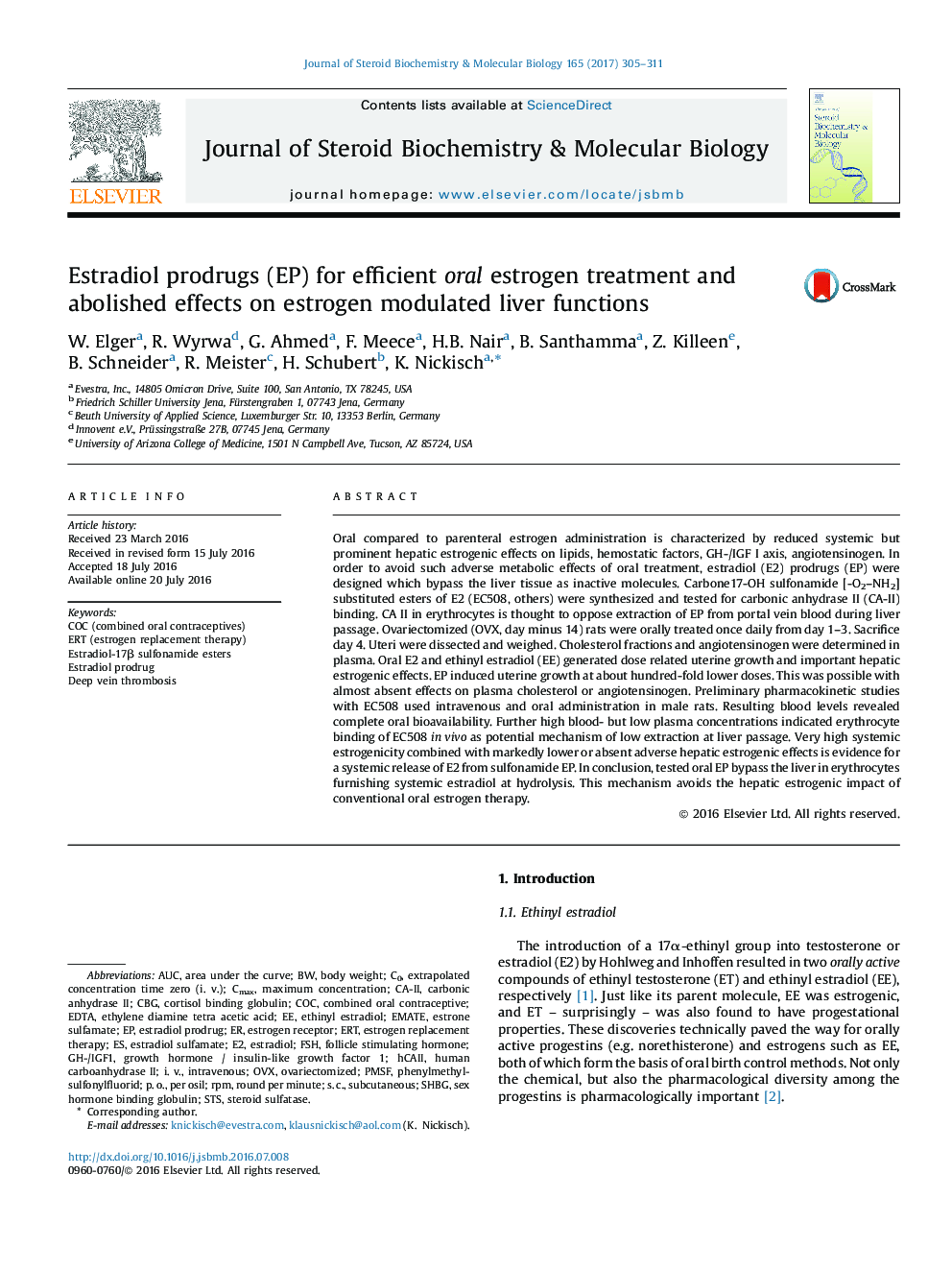| Article ID | Journal | Published Year | Pages | File Type |
|---|---|---|---|---|
| 5513142 | The Journal of Steroid Biochemistry and Molecular Biology | 2017 | 7 Pages |
â¢Sulfonamide esters of estradiol may technically improve oral estrogen therapy.â¢CA-II-mediated binding by erythrocytes avoids metabolism during hepatic clearance.â¢Systemic hydrolysis improves the bioavailability of estradiol.â¢E2 prodrug-based COC may reduce thromboembolic events.
Oral compared to parenteral estrogen administration is characterized by reduced systemic but prominent hepatic estrogenic effects on lipids, hemostatic factors, GH-/IGF I axis, angiotensinogen. In order to avoid such adverse metabolic effects of oral treatment, estradiol (E2) prodrugs (EP) were designed which bypass the liver tissue as inactive molecules. Carbone17-OH sulfonamide [-O2-NH2] substituted esters of E2 (EC508, others) were synthesized and tested for carbonic anhydrase II (CA-II) binding. CA II in erythrocytes is thought to oppose extraction of EP from portal vein blood during liver passage. Ovariectomized (OVX, day minus 14) rats were orally treated once daily from day 1-3. Sacrifice day 4. Uteri were dissected and weighed. Cholesterol fractions and angiotensinogen were determined in plasma. Oral E2 and ethinyl estradiol (EE) generated dose related uterine growth and important hepatic estrogenic effects. EP induced uterine growth at about hundred-fold lower doses. This was possible with almost absent effects on plasma cholesterol or angiotensinogen. Preliminary pharmacokinetic studies with EC508 used intravenous and oral administration in male rats. Resulting blood levels revealed complete oral bioavailability. Further high blood- but low plasma concentrations indicated erythrocyte binding of EC508 in vivo as potential mechanism of low extraction at liver passage. Very high systemic estrogenicity combined with markedly lower or absent adverse hepatic estrogenic effects is evidence for a systemic release of E2 from sulfonamide EP. In conclusion, tested oral EP bypass the liver in erythrocytes furnishing systemic estradiol at hydrolysis. This mechanism avoids the hepatic estrogenic impact of conventional oral estrogen therapy.
Graphical abstractDownload high-res image (173KB)Download full-size image
